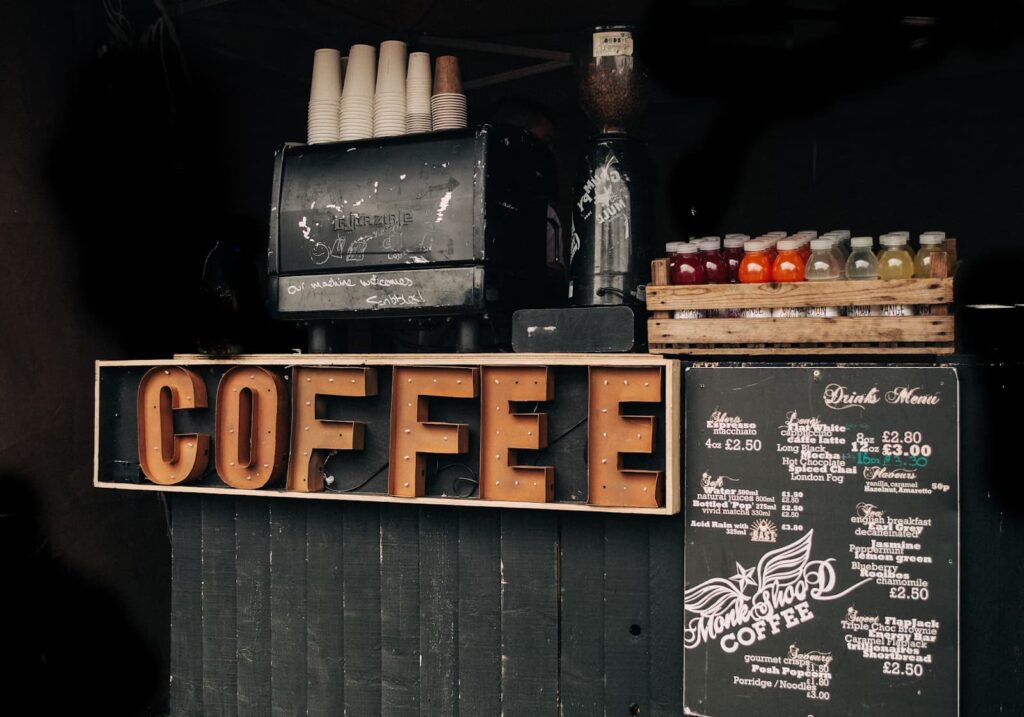Coffee to Go: How Air Travel Has Shaped Our On-the-Go Coffee Culture
6 min read
The intersection of coffee and air travel is a relatively modern phenomenon, yet one that has had a profound impact on global coffee consumption. As air travel became more widespread in the mid-20th century, the necessity for convenience and speed became paramount for travelers on the go. The demand for quick, portable beverages gave rise to the “coffee to go” culture we know today. Whether it’s grabbing a coffee before boarding a flight or enjoying a cup during a long layover, the relationship between air travel and coffee has significantly shaped the way we consume this beloved beverage. In this article, we will explore how air travel has influenced on-the-go coffee culture, its evolution, and how it continues to impact our daily routines.
The Origins of On-the-Go Coffee Culture
To understand how air travel influenced the rise of coffee to go, it’s essential to first look at the origins of coffee consumption in public spaces. Coffeehouses have existed for centuries, providing a space for people to gather, socialize, and conduct business. However, coffee was traditionally consumed on-site, in a slow, leisurely fashion. It wasn’t until the fast-paced lifestyle of the 20th century that coffee began to transform from a sit-down experience to an on-the-go necessity.
With the rise of commercial air travel in the 1950s and 1960s, people began moving more frequently across long distances. Airports were designed for efficiency, with travelers needing to grab meals, drinks, and snacks quickly before their flights. This created a demand for portable, convenient coffee solutions that could be enjoyed on the go. Coffee kiosks and takeaway options began to pop up in airports, catering to passengers in a hurry.
The concept of “coffee to go” gradually spread beyond airports, becoming a staple of modern urban life. As commuters and busy professionals sought convenience, coffee shops began offering takeaway cups for people to carry as they moved through their day. However, it was air travel, with its inherent need for speed and convenience, that catalyzed this shift in coffee culture.
The Role of Airports in Shaping Coffee Culture
Airports are hubs of transit, where passengers come and go from all corners of the globe. In this unique environment, coffee serves more than just a functional purpose—it’s also a source of comfort and routine in an otherwise hectic space. Airport cafés and coffee kiosks have become a vital part of the air travel experience, providing passengers with a familiar and comforting beverage before boarding their flights.
For many travelers, grabbing a cup of coffee at the airport has become a ritual, a small moment of normalcy amidst the stress of travel. Whether it’s an early morning flight or a late-night layover, coffee is often the go-to drink for travelers looking for a boost of energy or a moment to relax.
Over time, airport cafés have evolved from basic kiosks serving drip coffee to premium coffee bars offering a wide range of specialty beverages. Major coffee chains like Starbucks, Costa Coffee, and Peet’s Coffee have established a presence in airports worldwide, catering to the growing demand for high-quality coffee on the go. Travelers can now enjoy everything from a simple espresso to a meticulously crafted flat white, all served in convenient takeaway cups designed for portability.
The Evolution of In-Flight Coffee
In addition to airport cafés, the experience of coffee during flights has also evolved over the decades. In the early days of air travel, in-flight coffee was often an afterthought—served in small, disposable cups, brewed quickly, and with little attention to flavor or quality. However, as air travel became more competitive and airlines sought to differentiate themselves, improving the in-flight coffee experience became a priority.
Today, many airlines offer a variety of coffee options during flights, with some even partnering with well-known coffee brands to provide premium coffee experiences in the air. For example, Delta Airlines serves Starbucks coffee on its flights, while JetBlue offers Dunkin’ coffee, giving passengers access to their favorite coffee brands while flying.
Despite these improvements, brewing coffee at 30,000 feet presents unique challenges. The lower cabin pressure and dry air affect how coffee tastes, often resulting in a weaker, less aromatic brew. To counteract this, airlines and coffee providers have adapted their brewing methods, using specialized coffee blends and brewing equipment that enhance the flavor of in-flight coffee. While it may never quite match the quality of coffee brewed on the ground, the in-flight coffee experience has come a long way from its humble beginnings.
On-the-Go Coffee in a Post-Air Travel World

As coffee to go became ingrained in the air travel experience, it also began to influence everyday life. The convenience of grab-and-go coffee quickly spread to city streets, train stations, and office buildings. The proliferation of coffee chains and takeaway options revolutionized how people consume coffee, making it a staple of busy, modern lifestyles.
Today, the global on-the-go coffee culture is thriving, with millions of people enjoying their morning cup of coffee on the way to work, school, or the airport. Single-use coffee cups have become a symbol of the fast-paced world we live in, where efficiency and convenience are valued above all else.
While air travel played a significant role in creating this culture, it has also driven innovations in sustainability. The rise of single-use coffee cups has sparked concerns about environmental waste, leading to initiatives aimed at reducing disposable cup usage. Many airports and coffee shops now encourage passengers to bring reusable cups or offer compostable cup options as part of their sustainability efforts.
Coffee and the Jetsetter Lifestyle
For frequent flyers, coffee to go has become more than just a convenience—it’s a necessity. Whether catching a red-eye flight for a business meeting or embarking on a long-haul vacation, coffee provides a much-needed energy boost for travelers on the move. Many passengers have preferred coffee shops in airports where they can always count on getting a dependable cup of joe before their trip.
In fact, coffee has become such an integral part of the jetsetter lifestyle that many travelers actively seek out the best airport cafés during their layovers. Airports like Amsterdam Schiphol, Dubai International, and London Heathrow are known for their wide selection of coffee options, offering everything from international chains to local artisanal coffee shops. For many, these coffee stops are a highlight of the travel experience, providing a brief moment of relaxation before the next leg of the journey.
Looking Ahead: The Future of Coffee to Go in Air Travel
As air travel continues to evolve, so too will the coffee culture that accompanies it. Airports are increasingly focusing on offering premium coffee experiences, with many incorporating local coffee roasters and artisanal cafés into their terminals. Travelers can now enjoy a taste of the local coffee culture wherever they land, from Italian espressos in Rome to pour-over brews in Seattle.
At the same time, sustainability will play a larger role in the future of coffee to go. As airports and airlines work to reduce their environmental impact, innovations in reusable cups, compostable packaging, and eco-friendly coffee production will become more widespread. The rise of conscious consumption is likely to influence how travelers enjoy their coffee on the go, leading to more sustainable, environmentally friendly options in the future.
Conclusion
The connection between air travel and coffee culture is undeniable. What began as a necessity for travelers on the go has grown into a global phenomenon, shaping how people consume coffee both in airports and beyond. As air travel becomes more seamless and accessible, so too will the ways in which we enjoy our coffee on the go—elevating it from a simple pick-me-up to an essential part of the travel experience.



